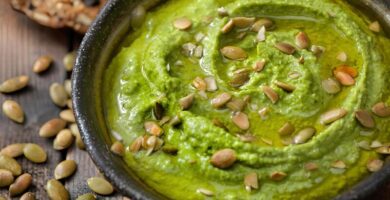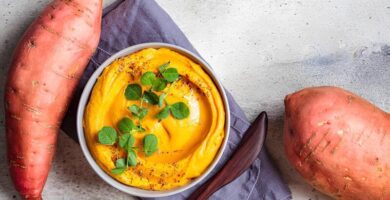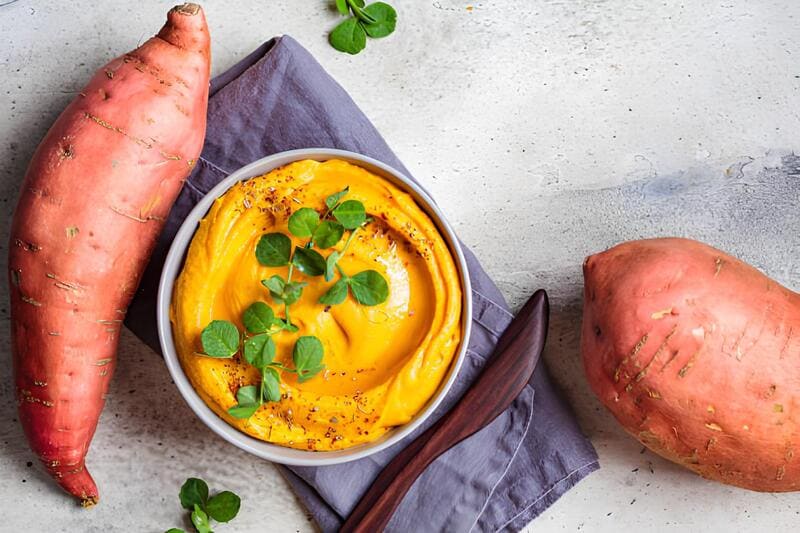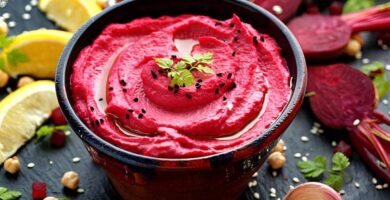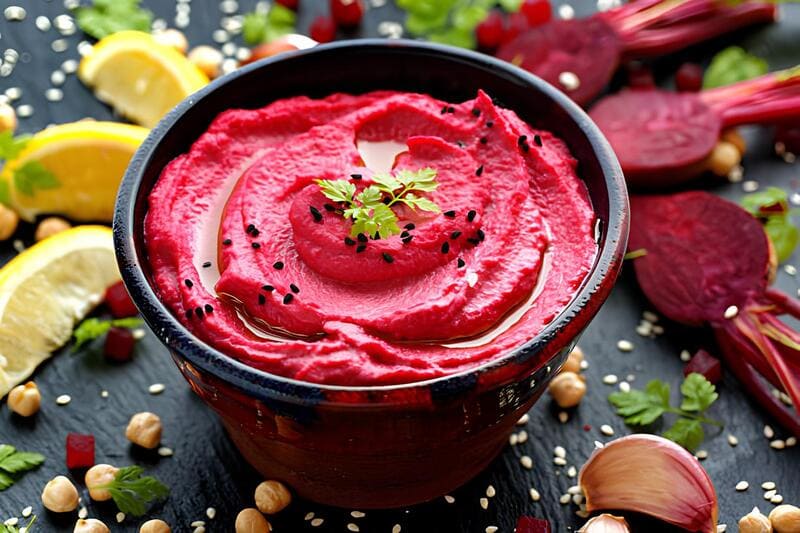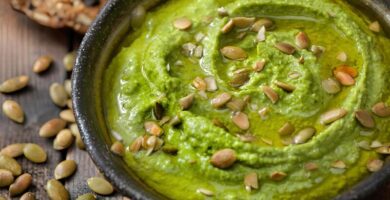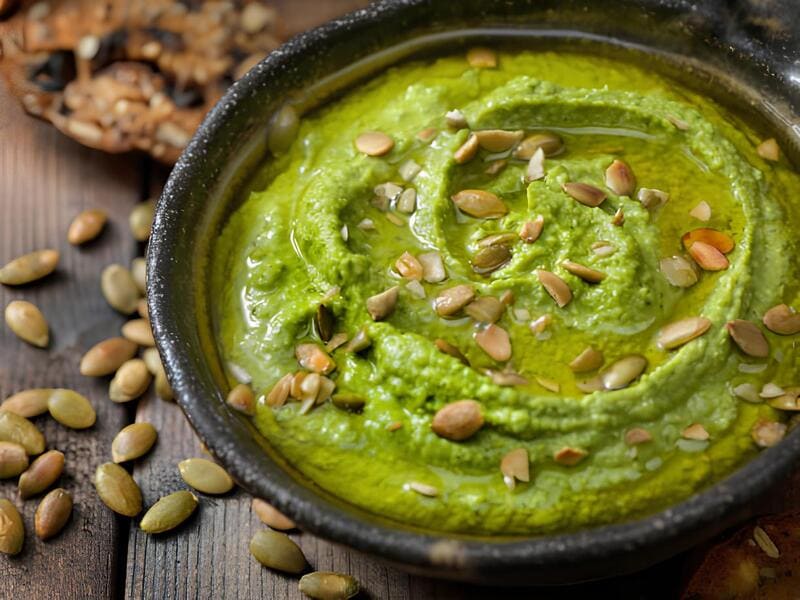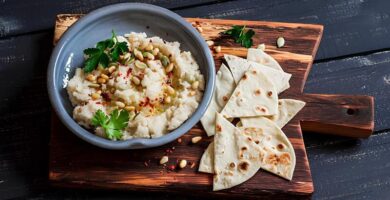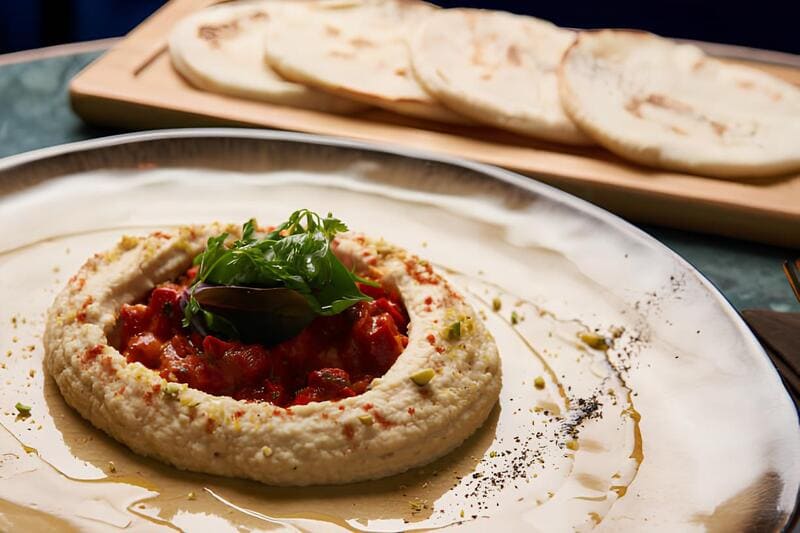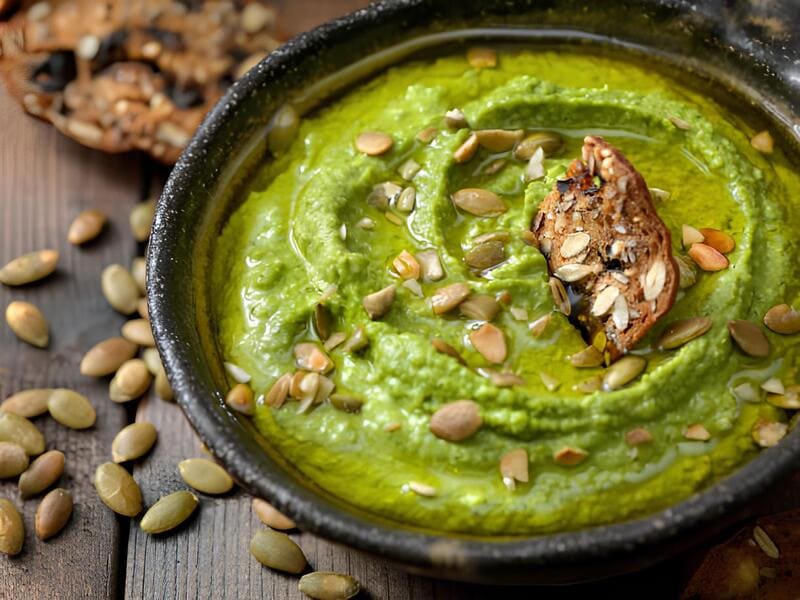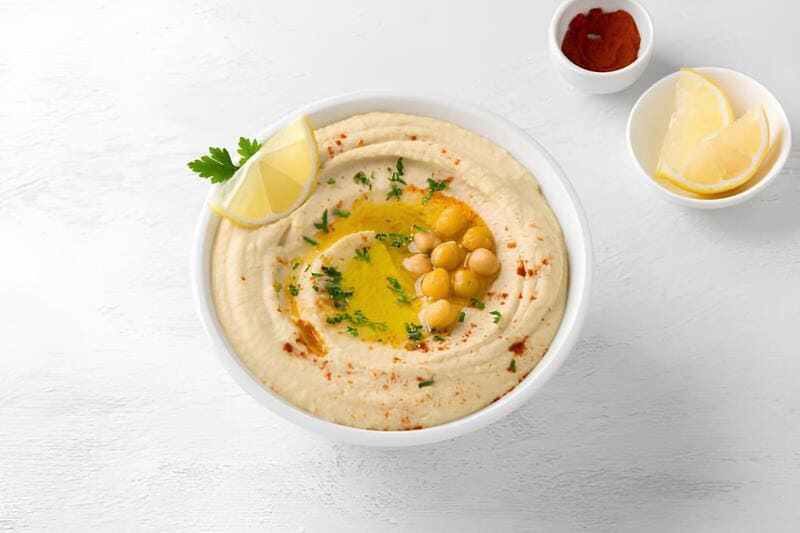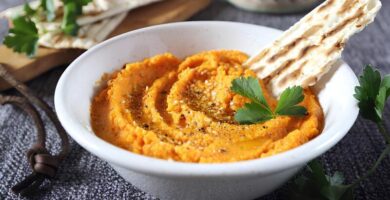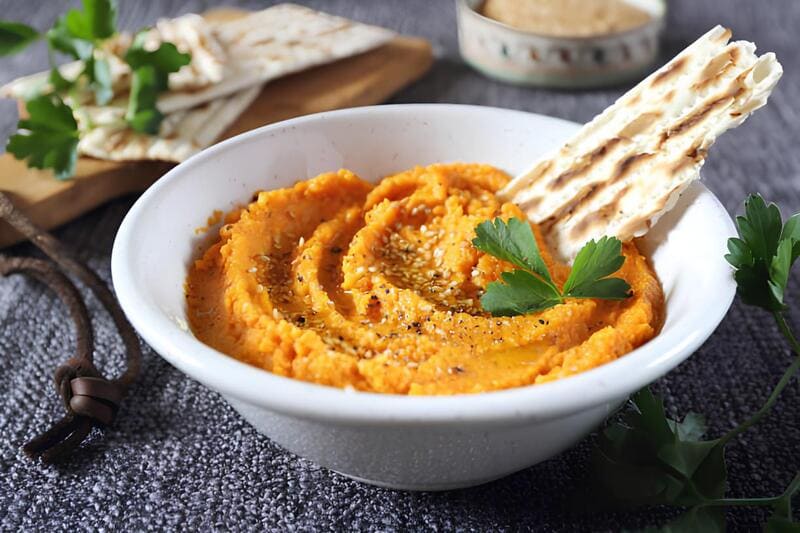
Pea hummus is a modern twist on the classic Middle Eastern dip, incorporating the vibrant flavors of peas and tarragon. Traditionally, hummus is made with chickpeas, but this variation offers a fresh, earthy, and slightly sweet taste. It’s an excellent choice for those looking for an easy, vegan option that’s both healthy and flavorful.
This spread is not only perfect for toast or as a dip, but it also stands out due to its bright green color and simple ingredients. It’s a great way to experiment with traditional flavors while creating something new and delicious. Whether you’re serving it at a gathering or keeping it in the fridge for daily snacking, it’s sure to become a staple.
Ingredients
- 2 cups frozen peas
- 1 small package of fresh tarragon (¾ oz)
- Juice of 2 lemons
- 2 tablespoons tahini (optional)
- Salt to taste
Preparation
- Boil a kettle of water and pour it over the frozen peas in a pan.
- Cover and let sit for about a minute until peas are bright green and tender.
- Drain peas and rinse with cold water to stop the cooking process.
- Strip the leaves from the tarragon stems and place in a food processor.
- Add the drained peas to the food processor.
- Squeeze the juice from two room-temperature lemons into the mixture.
- Add two tablespoons tahini if desired, for a creamier texture.
- Season with salt to taste.
- Blend on high until smooth, scraping down the sides once to ensure everything is incorporated.
- Adjust seasoning with more salt or lemon juice if needed.
Did you know?
Pea hummus is not just a vibrant, flavorful spread; it’s also packed with nutrients. Peas are rich in fiber, protein, and essential vitamins like vitamin C and K. This makes the dish a great choice for a healthy snack or addition to your meals. For those who prefer their hummus without tahini, simply omit it; the dip will still be incredibly smooth and delicious.
In ancient Egypt, peas were commonly used in various dishes, appreciated for their nutritional value and versatility. Today, pea hummus is becoming popular among those seeking a vegan and easy alternative to traditional chickpea hummus. You can even make it spicy by adding a touch of cayenne pepper or a splash of hot sauce to the mix. This hummus is best enjoyed fresh, but it can be stored in an airtight container in the refrigerator for up to a week, making it a convenient option for busy lifestyles.
Versatile and delightful, this Egyptian-inspired pea hummus can be customized with different herbs or garnishes. Parsley or a sprinkle of sumac can add unique flavors, and serving it on toast or with fresh veggies can make for a satisfying and nutritious meal. Give it a try and see why this modern take on a traditional dish is becoming a favorite in kitchens around the world.
